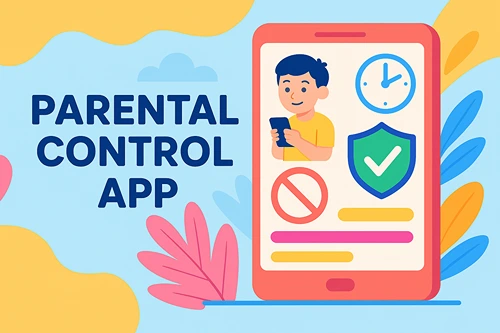Safety and Security Measures to Help Improve School Safety
School administrators consider safety a priority for the school’s students and staff. They ensure that students have a safe environment to grow, learn, and thrive. Similarly, teachers must feel safe while at work. That’s because emergencies can happen in schools even during school hours.
Unfortunately, there’s no way one can predict when fires, earthquakes, or intrusions can occur. As such, the best thing school administration officers can do is to implement stringent safety and security measures.
While it’s considered a standard to have security measures up in place in many learning institutions, it’s still worth taking a look at how else you can improve your school’s safety. That said, here are seven security measures you can consider:
Streamline School Access Process
While you want to keep intruders out of the school, you must also ensure authorized individuals can quickly gain access to the premises. This means students, teachers, other school staff, and authorized visitors don’t need to jump through hoops just to enter or exit the school grounds. You can easily police the flow of people by limiting access to the designated entry and egress points.
For example, you can issue digital cards in personalized lanyards to authorized people so they have access to entry points or areas that needs to be secure. These access control cards can also serve as school identification and can log students, staff, and visitors’ attendance and the time they entered the premises.
Install a Monitoring System
Aside from limiting access to only authorized individuals, it’s also a good idea to monitor all access points through security cameras. Installing security cameras in entry and exit points and secured areas provides you with visual references of who comes in and out of the building. Also, be mindful of the placement of security cameras so you can fully take advantage of them.
Place the security cameras at all entry points to the school whether they’re high-traffic or low-traffic areas such as main entrances, fire exits, and other access points. Then, have a security staff member monitor the videos and keep the video recordings for at least 30 days. The recordings can be reviewed in case of incidents.
Enhance Communication System
Having a public address (PA) system in place is very useful for regular and emergency communications. It’s easier to call the attention of specific individuals during busy class hours as well as announce important reminders to everyone in school. During emergencies like fires and earthquakes, the PA system can help guide staff and students on what to do.
Aside from the PA system, you also need to consider how students or teachers in classrooms can communicate with other staff during a crisis. If, for example, there’s a medical emergency, the staff’s mobile phones can be very helpful in getting immediate assistance. Alternatively, distress alarms can be just as handy. These aren’t like fire alarms that inform the fire department but are silent alarms that call for help. If this is something you’re considering, factor in where the alarm will be heard and who will be the responders. It’s also a good idea if the distress alarm can communicate where the emergency is happening so responders will be able to reach the location quickly.
Keep the School’s Exterior Well-Lit
Another way to improve school security is keeping the exterior well-lit. It can maintain the visibility of students and school staff during school hours. Additional illumination can also help identify individuals who are on the school premises. As such, it’s important to switch on basic exterior lights in the evening, especially at the different access points. It can help deter potential intruders and make them more identifiable in security videos should they do anything malicious.
Secure the School’s Perimeter
One additional way to protect your students and staff is to secure the school’s perimeter. Schools may consider enhancing their perimeter fencing with durable materials such as Western Red Cedar for improved safety. For instance, utilizing quality fencing options like those available at Big Tex can contribute to a secure and visually appealing school environment.
Of course, playgrounds must be well maintained but some schools also ensure gates to the playground are also secure when possible. At the very least, install security doors and windows on the school. Security screens on windows make it more difficult for potential intruders to break the glass, while maintaining visibility outside.

Image by pch.vector on Freepik
Proper Storage of Chemicals and Flammable Materials
Ensuring the proper storage of hazardous chemicals and flammable materials is a critical aspect of maintaining school safety. Science labs and custodial closets often house substances that can pose significant risks if mishandled. These materials should be stored in designated areas that meet safety standards, such as locked cabinets or specialized storage units. Cabinets must be clearly labeled and separated by chemical type to prevent reactions. Additionally, flammable materials should be kept away from heat sources or ignition points and stored in flame-resistant containers. Regular inspections are essential to identify and address any potential hazards, such as leaks or expired chemicals.
Staff training is another key element of chemical safety in schools. Teachers, custodians, and any personnel handling these substances should be educated on proper handling and storage techniques, as well as emergency procedures. Clearly posted safety protocols, Material Safety Data Sheets (MSDS), and access to appropriate personal protective equipment (PPE) can further reduce risks. By taking these precautions, schools create a safer environment for students and staff, minimizing the likelihood of accidents or dangerous exposures.
Train the Students and School Staff about Emergency Procedures
Another method to improve school safety is by educating students and school staff about the different emergency procedures you have in place. Informing them of plans for various scenarios such as earthquakes, fires, or in case of attacks can help everyone know what to do during such an event. School staff also become aware of their responsibilities should emergencies arise.
It’s also a good idea to conduct training and emergency drills so everyone can practice the necessary procedures and be more familiar with them. Additionally, regularly review the emergency plans and remind everyone. You can either choose to educate them at the start of each semester as this is the time you may have new students or staff joining.
While it not mandatory in many jobs, learning first aid skills and even CPR can save lives until professional help arrives. Consider offering free instruction for teachers who wish to learn these techniques, not only for the children in their schools, but their loves ones at home.
Implementing security measures ensures that your school is a safe place for students and teachers alike. But you shouldn’t just stop there. Continuously look for improvements so you can be prepared for different emergencies and potential threats. Consider the suggestions mentioned above and prioritize the safety and welfare of every person inside its premises.





